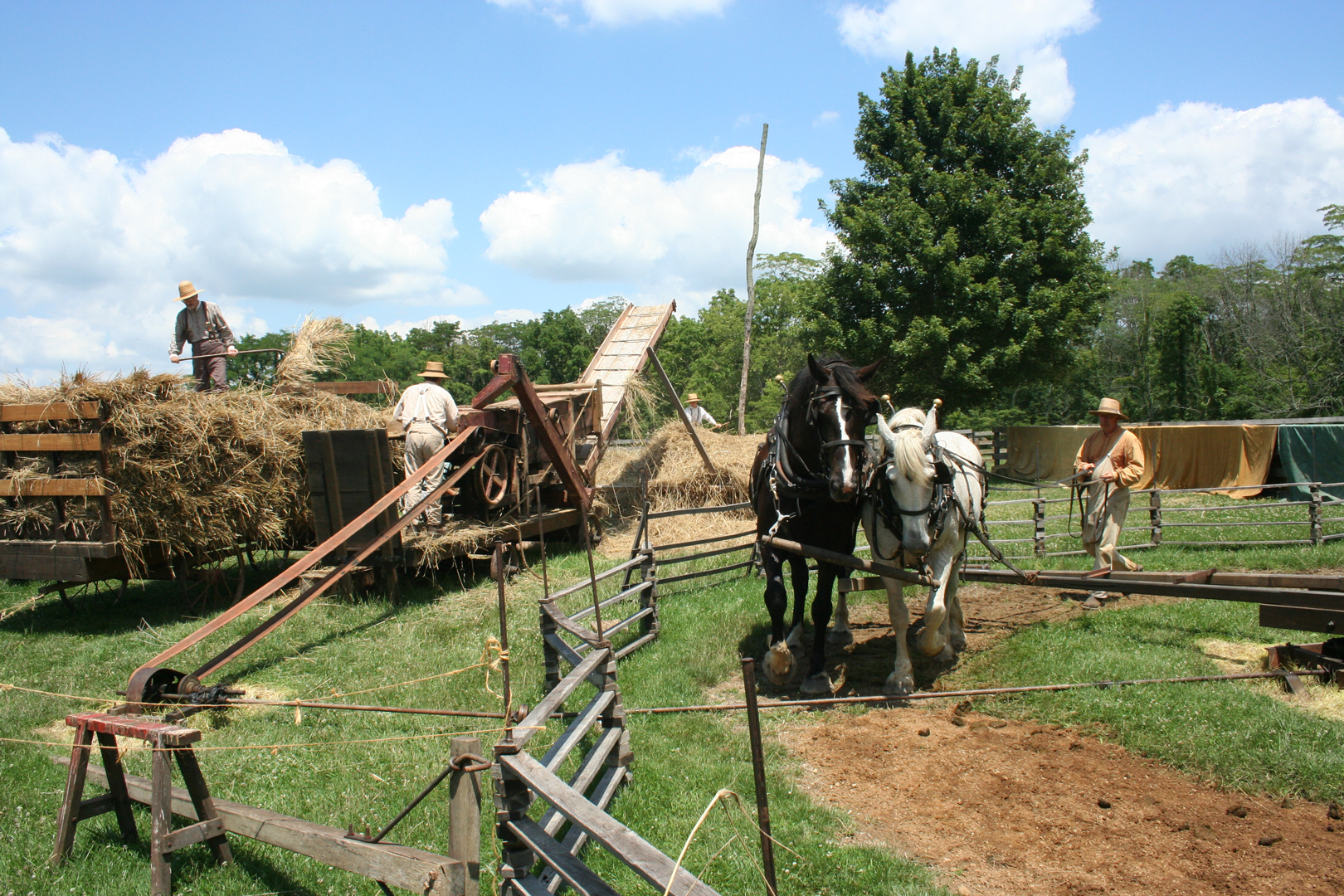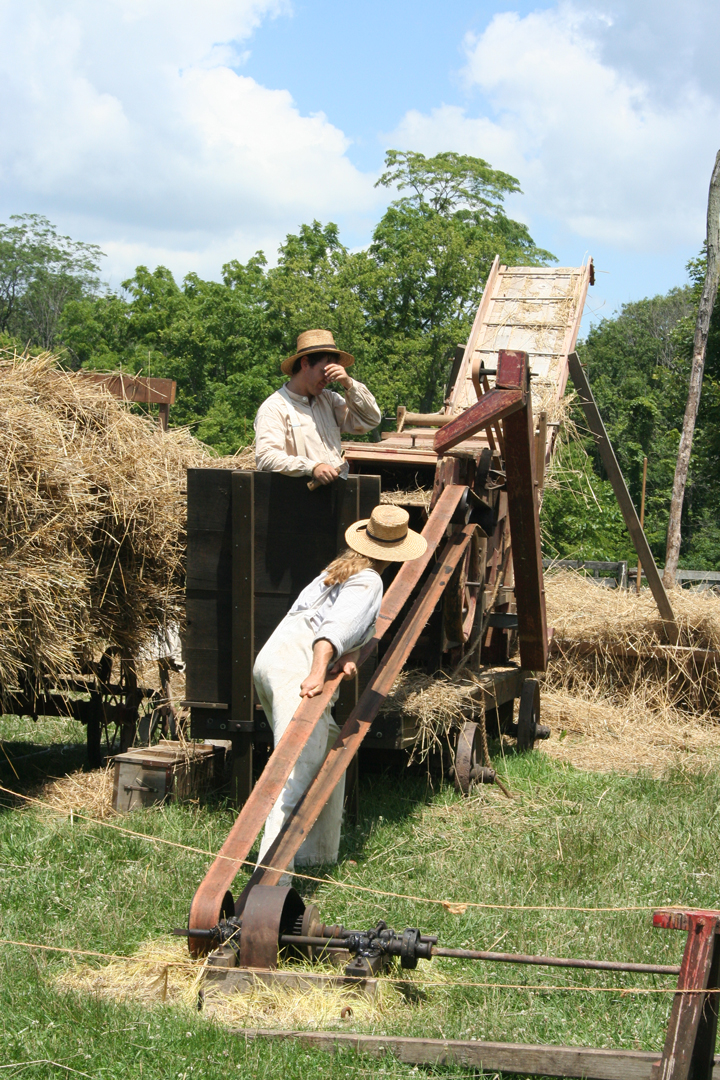
A golden, ripe wheat field is a beautiful sight and its appearance in July means it is grain threshing season on the farm.
At Metro Parks’ Slate Run Living Historical Farm, the farm workers use an 1880s era horse powered threshing machine to separate the seed heads of wheat, oats, barley and rye from straw stalks.
Marcus and Maude, two mighty Percheron draft horses, walk in a circle to drive an apparatus of belts and gears to power the threshing machine.
Maude, known as the “Queen of the Herd” and Marcus, who his handlers said can be a little clumsy, stood by patiently in their harnesses while farm workers labored to attach the wide leather drive belts to the threshing machine’s gears. Once everything was in place the horses began their circular walk and the thresher rumbled to life.
Threshing is hot, dusty work. One worker stands atop a wagon piled high with wheat and uses a pitchfork to toss the wheat to another who runs it through the thresher. After the wheat is separated the straw flies out a chute where another worker piles it up.
The operation can run smoothly, but like any machine, breakdowns are inevitable—a belt slips or a horse missteps and knocks a drive rod from its gears.
“That’s Marcus,” joked Slate Run Living Historical Farm’s Mike Huels, who drove the horses. “He can’t help it. Look at the size of his feet!”

After some good natured grumbling, the workers calmly re-attach belts and rods and proceed as usual because using the horse powered thresher is still better than flailing the wheat by hand with a stick, which was how it was done for centuries before the thresher was invented.
Of course, some farmers in the late 19th and early 20th century used steam powered threshers, which were faster. However, they could also be expensive to operate and, even worse, could explode.
Slate Run Living Historical Farm grows 1880s era Pringles Progress Oats and Democrat Wheat. According to information provided by Metro Parks, the farm obtained the seeds for these historic grains from a government seed bank. The grains were then grown on the farm for several years until enough seed was saved up to plant entire fields of the grain. Workers at Slate Run Living Historical Farm believe their fields of these historic grains are the only ones in existence in the country.
Democrat Wheat is unique in that it can grow up to five feet in height while modern strains of wheat grow three feet high. This gives modern wheat an advantage because its shorter stature means it is less likely to be bent and damaged by the wind.
The wheat is planted in October, lies dormant in the winter, grows again in the spring, and ripens in July when it is harvested. After threshing, the wheat is sold for profit, fed to livestock, and some is saved for seed.
Nothing is wasted on the farm, so after threshing the straw is used for livestock bedding, mulching paths and gardens, insulating walls, making strawboard (similar to cardboard), and as packing material.
So, the next time you’re enjoying some nice, warm, buttered toasted wheat bread, remember that piece of bread started in the fields and with the thresher.
RICK PALSGROVE
Southeast Messenger editor
Article reproduced courtesy of the Southeast Messenger newspaper
See Rachel Brooks’ first-hand account of threshing 19th-century style
